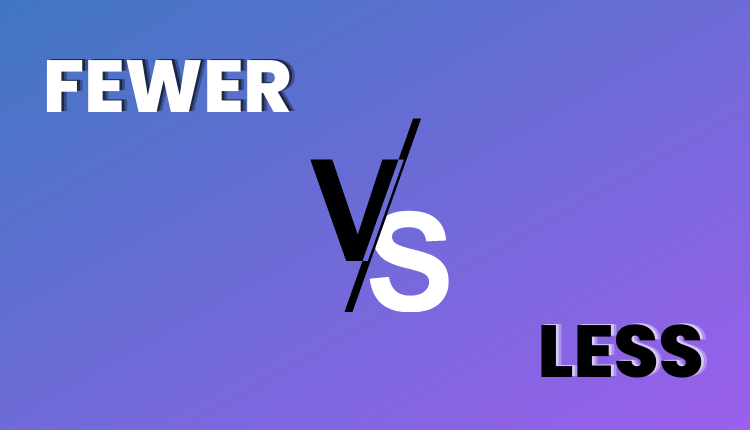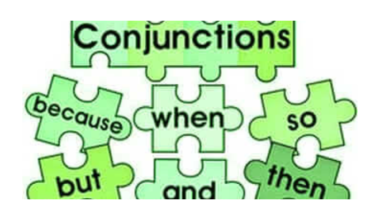Understanding when to use fewer vs less is a common grammar challenge, but once you know the simple rule, you’ll never make the mistake again.
“Fewer” is used for countable items, while “less” is used for uncountable items or quantities. In this comprehensive guide, we’ll cover the rules, practical examples, exceptions, and tips to help you easily choose between “fewer” and “less.”
When to Use Fewer vs Less
The fundamental rule is straightforward:
- Use “fewer” when referring to items you can count individually, like “fewer cars” or “fewer apples.”
- Use “less” when referring to a general amount that can’t be counted individually, like “less water” or “less traffic.”
This basic rule is based on whether the noun in question is countable or uncountable:
- Countable nouns are things you can count individually (e.g., books, people, houses).
- Uncountable nouns refer to quantities or substances that are not easily counted (e.g., water, sugar, traffic).
Practical Examples of Fewer vs Less in Sentences
To illustrate the rule, let’s look at various examples in everyday scenarios:
- Groceries: “We need fewer bags of chips and less soda for the party.”
- Explanation: “Bags of chips” are countable, so “fewer” is correct. “Soda” is a liquid and uncountable, so “less” is appropriate.
- Travelling: “There were fewer people on the train and less noise during the ride.”
- Explanation: “People” are countable, while “noise” is a general, uncountable quantity, so “less” works best.
- Time Management: “If you spend less time on your phone, you’ll have fewer distractions.”
- Explanation: “Time” is an uncountable quantity, and “distractions” are individual, countable interruptions.
- Cooking: “Use fewer tomatoes and less garlic powder in this recipe.”
- Explanation: “Tomatoes” are countable, while “garlic powder” is not individually countable.
- Workplace: “The project required fewer hours than expected, and we experienced less stress.”
- Explanation: “Hours” can be counted, but “stress” is an uncountable state or quantity.
These examples demonstrate how “fewer” and “less” clarify specific, countable items versus general, uncountable amounts.
The Supermarket Test: Quick Tip for Fewer vs Less
If you’re ever uncertain whether to use “fewer” or “less,” try the “supermarket test.” Look at the express checkout sign, which often says “10 items or less.” Although this usage is common, “10 items or fewer” is grammatically correct because “items” are countable.
Use this as a quick mental check:
- If you can put a number in front of it (like 10 items), it’s countable, and you should use “fewer.”
- If you can’t put a specific number in front of it (like 10 noise or 10 water), it’s uncountable, and “less” is correct.
Exceptions to the Rule: Fewer vs Less in Everyday Language
While the “countable vs. uncountable” rule covers most cases, English has some exceptions:
1. Money: Use “less” even though money is countable.
- Example: “I spent less money than I anticipated.”
- Explanation: Even though you can count individual units of currency (like dollars or euros), money is generally treated as a quantity rather than individual items.
2. Time and Distance: Use “less” with units of time and distance.
- Example: “The commute took less than 30 minutes.”
- Explanation: Although minutes can be counted, time is often treated as a continuous measure.
3. Statistics and Percentages: Use “less” with percentages and statistical measurements.
- Example: “Less than 20% of the participants chose this option.”
- Explanation: Percentages are treated as a whole or uncountable amount, even when they refer to specific people or items.
4. Measurements and Quantities: Use “less” with certain measurements, such as weight, volume, or height.
- Example: “She poured less than a litre of juice.”
- Explanation: Even though litres and grams can be measured precisely, these quantities are generally treated as uncountable.
These exceptions help explain why some phrases may appear to “break the rule” but are actually following subtle nuances of English.
Common Mistakes and Misconceptions with “Fewer” vs. “Less”
Knowing when to use fewer and less can be tricky, and even native speakers sometimes get it wrong. Here are a few common mistakes to watch out for:
1. In Lists or Series
- Incorrect: “We need to bring fewer cups, napkins, and water.”
- Correct: “We need to bring fewer cups and napkins and less water.”
- Explanation: “Cups” and “napkins” are countable items, while “water” is uncountable.
2. In Comparing Groups
- Incorrect: “This year’s class has less students than last year.”
- Correct: “This year’s class has fewer students than last year.”
- Explanation: “Students” are individuals and countable, so “fewer” should be used.
3. In Describing Abstract Concepts
- Incorrect: “She shows less patience with each meeting.”
- Correct: “She shows less patience with each meeting.”
- Explanation: While this sentence seems right, it’s a good reminder that “patience” is an uncountable noun, so “less” is correct.
Misconceptions often arise because people use “less” informally even in places where “fewer” should be used. Remembering that countable items use “fewer” can help keep these errors in check.
FAQs on Using “Fewer” vs. “Less”
Q1: Can I always use “less” instead of “fewer”?
- Answer: No, using “less” in place of “fewer” may work in casual conversation, but in formal or written English, it’s best to stick to the rule. “Fewer” makes sentences more precise and avoids misunderstandings.
Q2: Why do people say “less” for time and money if they’re countable?
- Answer: Time and money are considered continuous quantities in English, so “less” is preferred. Saying “fewer dollars” or “fewer minutes” can sound awkward, even though it’s technically countable.
Q3: Is it acceptable to say “10 items or less”?
- Answer: Technically, “10 items or fewer” is correct because “items” are countable. However, “10 items or less” has become widely accepted in casual usage, even appearing on store signs.
Q4: Are there other words that follow the same rule as “fewer” and “less”?
- Answer: Yes, “much” and “many” follow a similar rule. Use “many” for countable nouns (“many books”) and “much” for uncountable nouns (“much water”).
Exercises: Practice Using “Fewer” and “Less”
Practicing helps reinforce the concept of “fewer” vs. “less.” Try these sentences and see if you can choose the correct word:
- I have _______ pencils than you.
- Answer: Fewer (pencils are countable).
- She spends _______ time watching TV now.
- Answer: Less (time is uncountable).
- The recipe requires _______ flour than last time.
- Answer: Less (flour is uncountable).
- We need _______ chairs for the party.
- Answer: Fewer (chairs are countable).
- There was _______ traffic on the way to work today.
- Answer: Less (traffic is uncountable).
Reviewing these exercises regularly can help reinforce the correct usage of “fewer” and “less” in your writing and speech.
Tips to Remember the Difference
- Visualize Countable vs. Uncountable Items: If you can see individual units (e.g., books, people), it’s likely countable, so use “fewer.” If it’s a collective or undivided amount (e.g., water, happiness), use “less.”
- Think in Quantities: For money, time, distance, and other measurable quantities, “less” is generally used, even though they might seem countable in a specific context.
- Practice Regularly: Incorporate the correct use of “fewer” and “less” in daily conversation and writing. Awareness and consistent practice can make correct usage second nature.
Conclusion
Mastering the difference between fewer and less doesn’t have to be complicated. By following the “countable vs. uncountable” rule and keeping exceptions in mind, you can quickly determine which word fits best.
Use “fewer” for items you can count individually and “less” for general amounts that can’t be counted precisely. With these five simple rules and practical examples, you’ll confidently apply “fewer” and “less” in everyday language, making your communication clearer and more precise.







